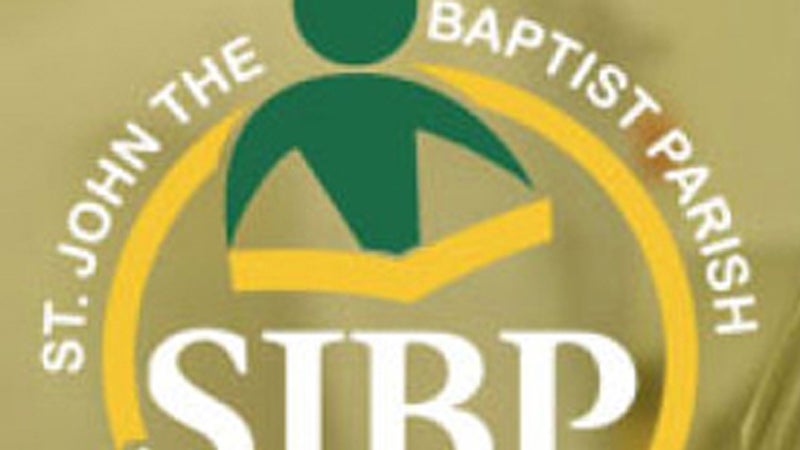Court date involving tax increase set for July 15
Published 12:00 am Saturday, July 10, 2021
|
Getting your Trinity Audio player ready...
|
LAPLACE — In a document signed by Division C Judge J. Sterling Snowdy Wednesday afternoon, it was ordered that the St. John Parish School Board must appear in court at noon on July 15 to prove that the ad valorem tax increase that passed on June 17 was completed in accordance with the law.
Petitioner Shondrell Perrilloux of LaPlace requested the court grant a temporary restraining order and hearing for preliminary writ of injunction to determine whether the tax increase follows the Open Meetings Law established in Article 7, Section 23C of the Louisiana Constitution. Perrilloux also argued that resolutions related to taxes need to be written in simple language that people can understand.
The School Board must prove that a two-thirds vote of the total membership approved the millage increase after a public hearing held in accordance with Open Meetings Law. The Board must also prove that public notice of the time, place and subject matter of the hearing was published on two separate days no less than 30 days before the public hearing in the official journal of the taxing authority (L’OBSERVATEUR) and in another newspaper with a larger circulation within the taxing authority, if there is one.
On June 17, the St. John School Board passed a resolution to create extra revenue for local schools by raising millage rates.
Property taxes would increase based on the taxpayer’s assessed property value, according to School Board President Nia Mitchell-Williams. The estimated amount of taxes to be collected in the next year from the increased millage would be $31,742,812.35, and the amount of increase in taxes attributable to the millage increase is $9,684,171.99.
The millage increase did not have to be voted on by the public because it is not in excess of the prior year’s adjusted maximum rate, which has previously been set by voters. The Louisiana State Legislative Auditor’s Office is the agency that supervises this process.
School Board President Nia Mitchell-Williams said the increase in taxes was necessary to address a budget deficit and make the district fiscally sound. She said the district has increased and/or sustained programming while the student population has decreased.
On April 30, district leaders projected a total yearly deficit of $11,904,000 based on monthly spending trends. The School Board discussed how overstaffing has contributed to the current financial crisis, and a reduction in force is planned. Site consolidations are also underway with the closing of the Milesville site and the relocation of the STEM program to the East St. John Freshman Building.
The School Board intended to roll forward the millage last year, but an advertising error prevented the tax increase from occurring. Mitchell-Williams said the $9 million tax increase not moving forward benefitted the public in the midst of the pandemic.
“People lost jobs, people weren’t working, and their taxes weren’t raised. Now, we are in a better financial situation, the economy has been stimulated, and now the School Board needs that money to provide better academic services,” she said.
School Board Financial Update
The St. John School Board convened Wednesday, July 7 for a finance committee meeting. David Andras, supervisor of informational technology/services/PEP, shared that the School Board’s projected fund balance is $4,420,868, enough to meet payroll for August 2021 without a loan.
At Thursday’s School Board meeting in Edgard, the Board voted to approve a loan agreement not to exceed $9,500,000. The loan will also require approval from the bond commission at a July 15 meeting.
Andras said that if the loan does not come through, after August, the School Board will need to shift pay dates until after MFP funding arrives. This would involve pushing payroll back one week.
According to Andras, without the loan, the School Board will be cash negative in October.
Jason Akers with Foley & Judell attended Wednesday’s Finance Committee Meeting to provide an update on the loan status.
Akers said he does not foresee any roadblocks to the loan closing process.
“The underwriting at the bank and the State Bond Commission approval were extremely benefitted by providing the cost mitigation plan with controls put in place and the roll forward of the millage to increase ad valorem tax revenues,” Akers said.
Work is underway on an amended budget for the 20-21 school year, as well as a proposed budget for the 21-22 school year. Budget reductions are expected to translate into cost savings in September, according to School Board member Debbie Schum.
“I want people to know that we haven’t just left it to where we will keep spending $1.6 million more than what we are taking in (each month),” Schum said. “We are taking steps to see the reductions.”
| School Board Changes in Millage Rates |
| (Adjusted Rate on Left ➔ 2021 Levy on Right) School Constitutional 2.16 ➔ 3.71 School Maintenance 2.53 ➔ 4.33 School Salaries 2.02 ➔ 3.47 School Retiree Benefits 0.58 ➔ 1.00 School Academic Improvement 1.75 ➔ 3.00 School Salaries 2.34 ➔ 4.00 School Salaries/Health Care 6.16 ➔ 10.56 |
| School Board Bond – Total Millage 11.00: -General Obligation School Bonds 1.31 Series 2009 -General Obligation School Bonds 2.23 Series 2010 -QSCBS 0.92 Series 2011 -General Obligation School Bonds 1.16 Series 2011 -General Obligation School Refunding 0.19 Series 2012 -General Obligation School Bonds 1.77 Series 2013 -General Obligation school Bonds 1.65 Series 2014 -General Obligation School Bonds 1.77 |





